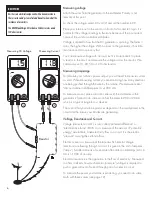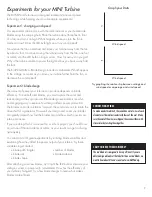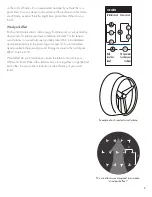
11
The Power in the Wind
If a large truck or a 250lb linebacker was moving toward you at a high
rate of speed, you would move out of the way, right?
Why do you move? You move because in your mind you know that this
moving object has a great deal of energy as a result of its mass and its
motion. And you do not want to be on the receiving end of that energy.
Just as those large moving objects have energy, so does the wind. Wind
is the movement of air from one place to another. That’s the motion part.
What is air though? Air is a mixture of gas molecules. It turns out that if
you get lots of them (and I mean lots of them) together in a gang and they
start moving pretty fast, they can definitely give you a serious push. Just
think about hurricanes, tornadoes, or a very windy day!
Why aren’t we scared of light winds while we stay inside during a
hurricane or wind storm? The velocity of those gangs of gas molecules
have a dramatic impact on whether or not we will be able to stay
standing on our feet. In fact, in just a 20 mph gust you can feel those gas
molecules pushing you around.
Humans have been taking advantage of the energy in the wind for ages.
Sailboats, ancient windmills, and their newer cousins the electrical wind
turbines, have all captured the energy in the wind with varying degrees
of effectiveness. They all use a device such as a sail or blade to “catch”
the wind. Sailboats use wind energy to propel them through the water.
Windmills use this energy to turn a rod or shaft.
A simple equation for the power in the wind is described below. This
equation describes the power found in a column of wind of a specific
size moving at a particular velocity.
P=½
ρ
(
π
r
2
) V
3
P = Power in the Wind (watts)
ρ
= Density of the Air (kg/m
3
)
1.2 kg/m
3
at sea level and 20ºC
r = Radius of your swept area (m)
V = Wind Velocity (m/s)
π
= 3.14
From this formula you can see that the size of your turbine and the velocity
of the wind are very strong drivers when it comes to power production.
If we increase the velocity of the wind or the area of our blades, we
increase power output.
The density of the air has some impact as well. Cold air is more dense
than warm air, so you can produce more energy in colder climates.
Swept area is the area of the circle inscribed by
the tips of a wind turbine’s blades.
r
Swept
area
Summary of Contents for MINI Wind Turbine
Page 1: ...MINI Wind Turbine Instruction Manual...
Page 13: ...15...
































